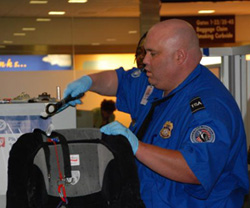
A new study by the Virginia Tech Transportation Institute examines the difference between regular automobiles and the new “self-driving” models. According to the study (commissioned by an admittedly self-interested party, Google) humans behind the wheel crash 4.2 times per million miles, self-driving cars only 3.2 times per million miles. And the self-driving era is in its infancy. As the new cars improve, pass regulatory scrutiny and gain wider adoption, tens of thousands of lives could be saved every year in the US alone.
But even assuming the validity of the study’s findings, self-driving cars are not necessarily without their problems. Given government’s growing interest in controlling how and where Americans travel, they could become just another piece of our ever more pervasive surveillance state.
Above and beyond immediate, local situational awareness — staying on the road, keeping track of the distance from and speed of surrounding cars, etc. — self-driving cars need constant awareness of the larger environment: Where they are on the map, what turns to make to get where they’re taking you, and whether or not there are accidents, traffic jams or road repairs ahead.
While any single piece of this information might be available from a number of sources, it’s easier to get everything from one source: A network to which the car either remains connected at all times, or connects to frequently when driving. And this is a two-way street (pun intended!). The car requests information from the network … and takes instructions from the network too.
This fact creates all kinds of opportunities for abuse by government agencies with command influence over the network.
Something going on your government doesn’t want you to see? The network says there’s been a train derailment and routes all traffic so as to detour around the area.
Someone your government DOES want to see? When she gets in her car to go to work, the doors lock, she finds that she cannot turn off the engine, and she’s driven straight to the nearest police station.
I’m sure you can come up with other dystopian possibilities.
Widespread, even universal, adoption of self-driving cars is probably inevitable, and probably a good thing. It’s important that we don’t lose site of priorities other than safety and convenience, though. The market should demand, and government should be powerless to forbid, a driver prerogative of assuming manual control of his or her vehicle at any time, for any reason.
Thomas L. Knapp is director and senior news analyst at the William Lloyd Garrison Center for Libertarian Advocacy Journalism (thegarrisoncenter.org). He lives and works in north central Florida.
PUBLICATION/CITATION HISTORY
- “The Self-Driving Dilemma: Safety versus Freedom,” by Thomas L. Knapp, Ventura County, California Citizens Journal, 01/10/16
- “The self-driving dilemma: Safety versus freedom,” by Thomas L. Knapp, Queen Creek / San Tan Valley, Arizona Independent, 01/10/16
- “The self-driving dilemma: Safety versus freedom,” by Thomas L. Knapp, Apache Junction/Gold Canyon, Arizona Independent, 01/10/16
- “Be wary of a self-driven surveillance state,” by Thomas L. Knapp, Libby, Montana Western News, 01/12/16
- “The self-driving dilemma: Safety versus freedom,” by Thomas L. Knapp, Davenport, Iowa Quad-City Times, 01/13/16
- “The self-driving dilemma: Safety versus freedom,” by Thomas L. Knapp, Muscatine, Iowa Journal, 01/13/6
- “The self-driving dilemma: Safety versus freedom,” by Thomas L. Knapp, Woonsocket, Rhode Island Call [web and print editions], 01/13/16
- “The Self-Driving Dilemma: Safety Versus Freedom,” by Thomas L. Knapp, Iowa Free Press, 01/16/06
- “The self-driving dilemma: Safety versus Freedom,” by Thomas L. Knapp, Florence, South Carolina News Journal [web and print editions], 03/02/16

